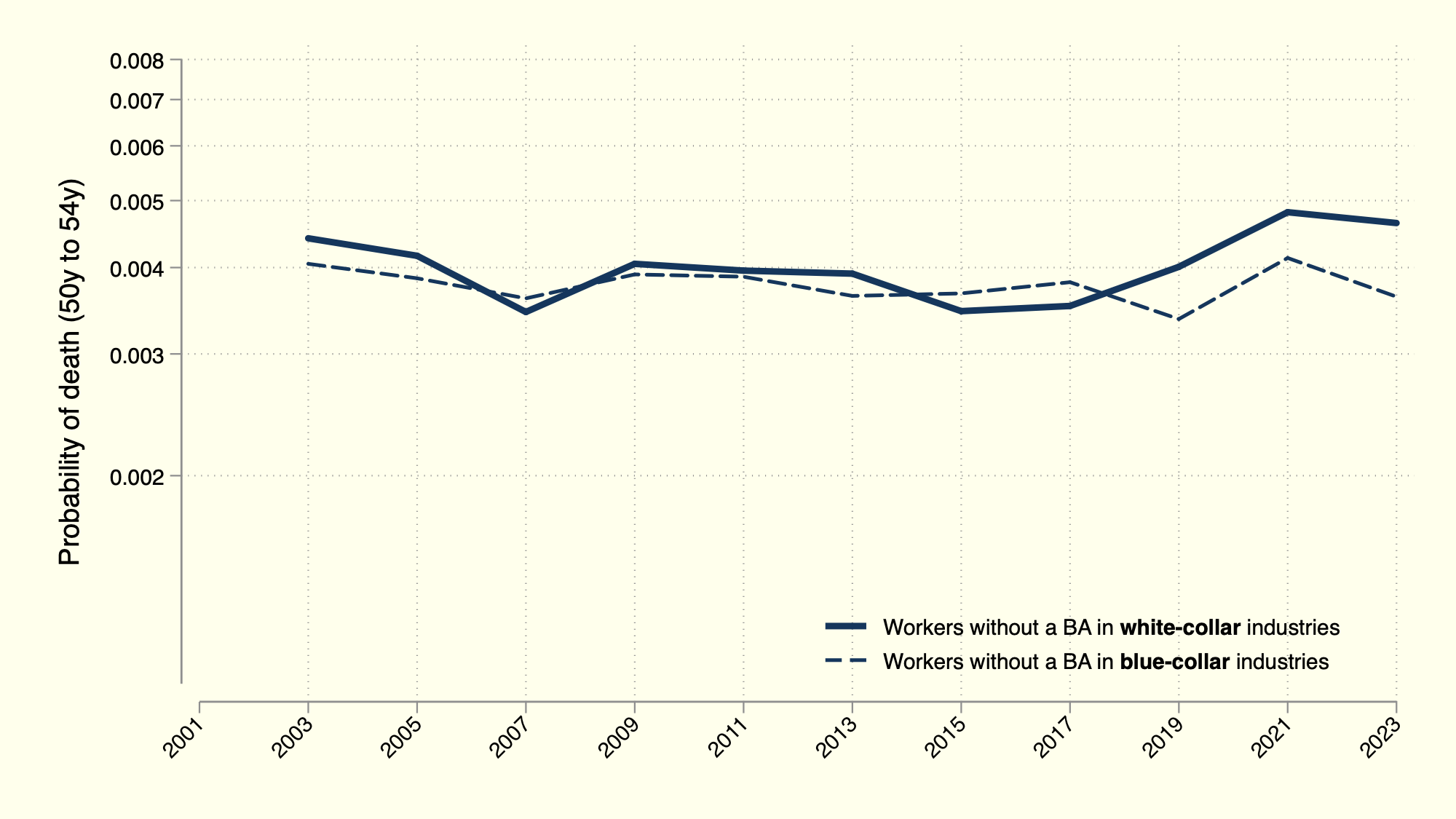Above: We show midlife mortality rates for men without a four-year college degree working in (i) white-collar industries and (ii) blue-collar industries, namely manufacturing, construction, transportation, and utilities.
Working paper currently embargoed
Abstract
Using a novel single-source mortality file that covers a broad swath of the US population, this paper sheds light on the large and increasing mortality advantage that Americans with a four-year college degree hold over their less educated peers. We focus on a popular explanation for the division between them: their jobs. From data immune to many of the measurement issues that complicate the interpretation of mortality studies, we first show mortality rates over time by granular levels of education, including the first estimates of mortality by college major. We then plot mortality rates for specific blue-collar industries to see if this storied notion of a working class is driving the poor health of low and moderately educated Americans. Finally, we estimate mortality gaps that are conditional on industry, occupation, income, and other labor market outcomes to test whether their jobs can explain the growing chasm.
Disclaimer: Any views expressed are those of the authors and not those of the U.S. Census Bureau. The Census Bureau has reviewed this data product to ensure appropriate access, use, and disclosure avoidance protection of the confidential source data used to produce this product. This research was performed at a Federal Statistical Research Data Center under FSRDC Project Number 2603. (CBDRB-FY25-P2603-R11872/12193)

